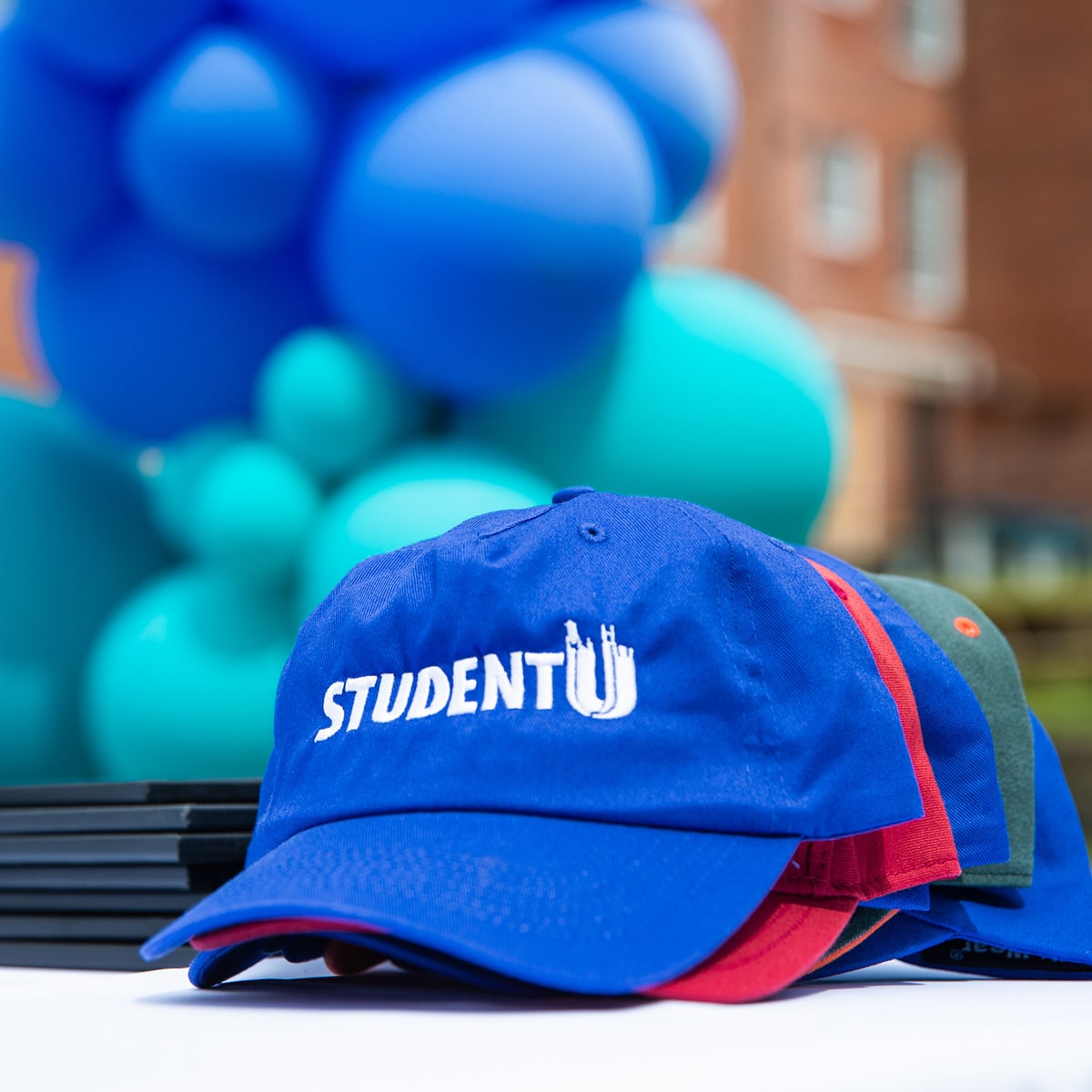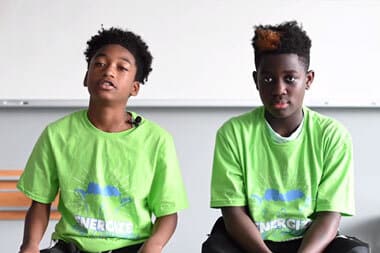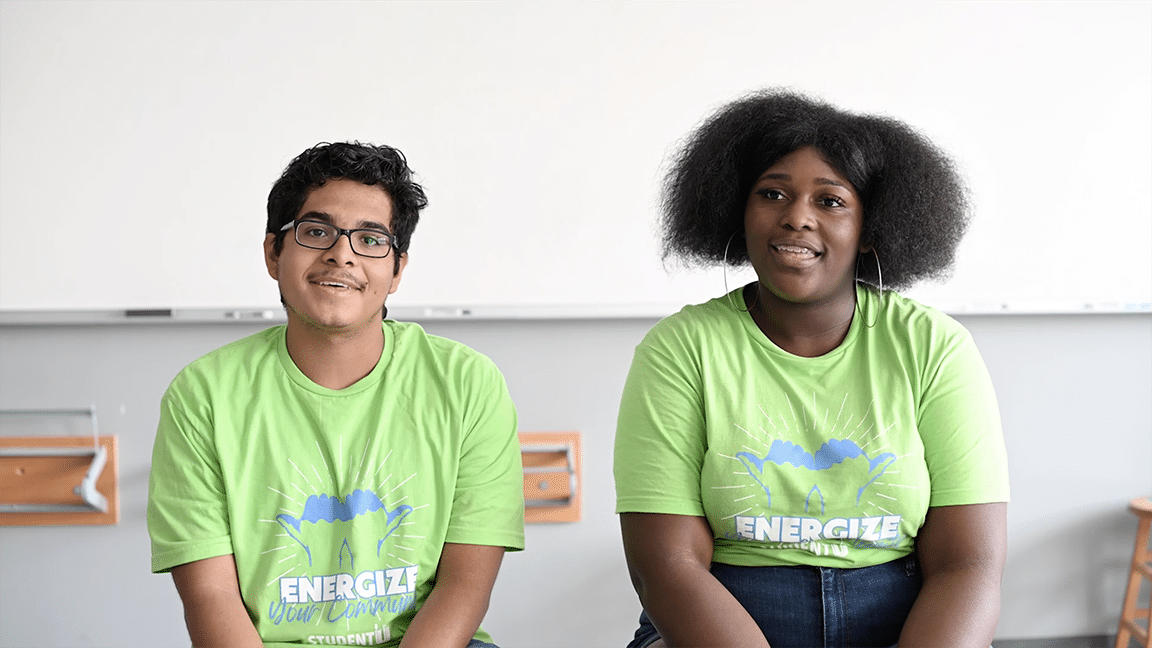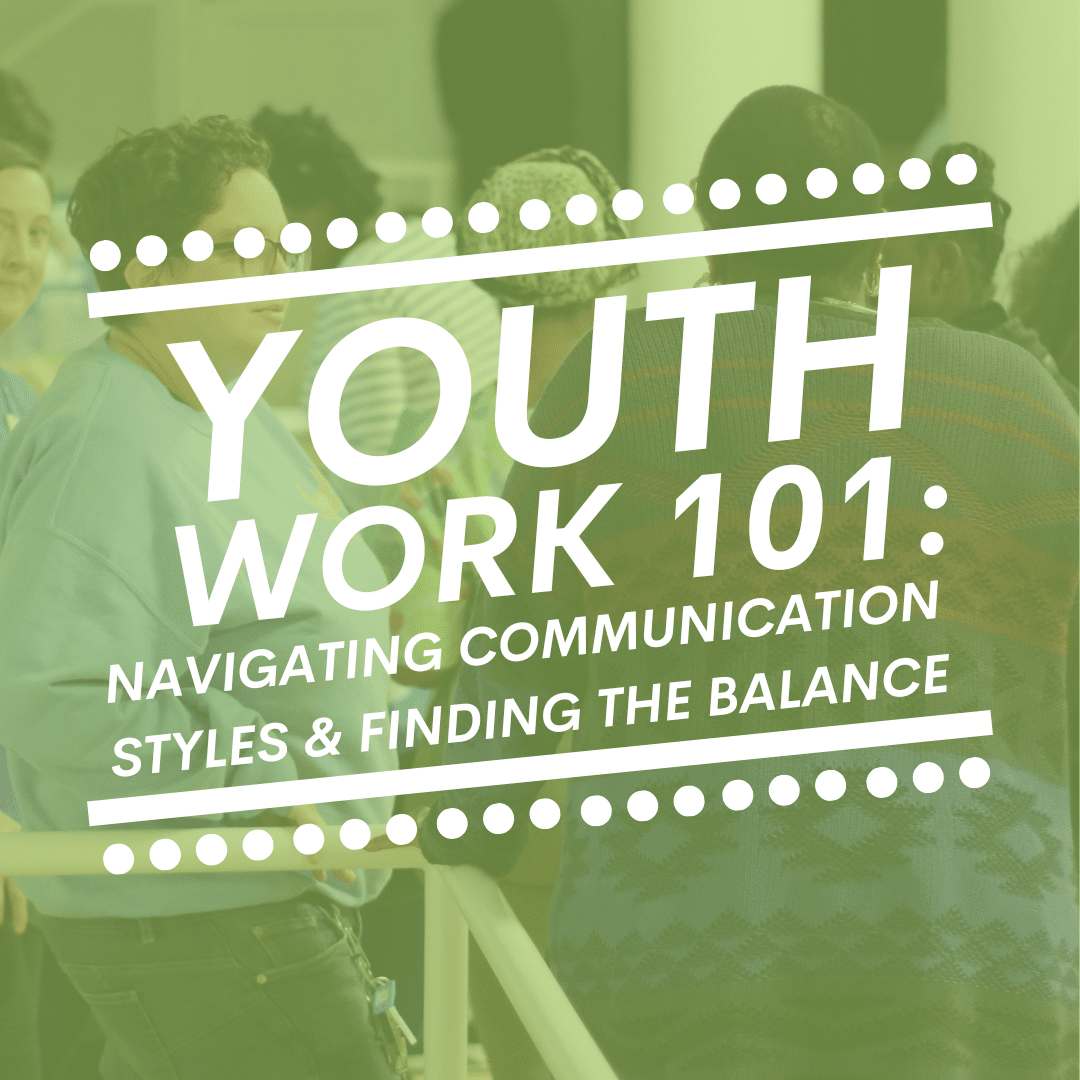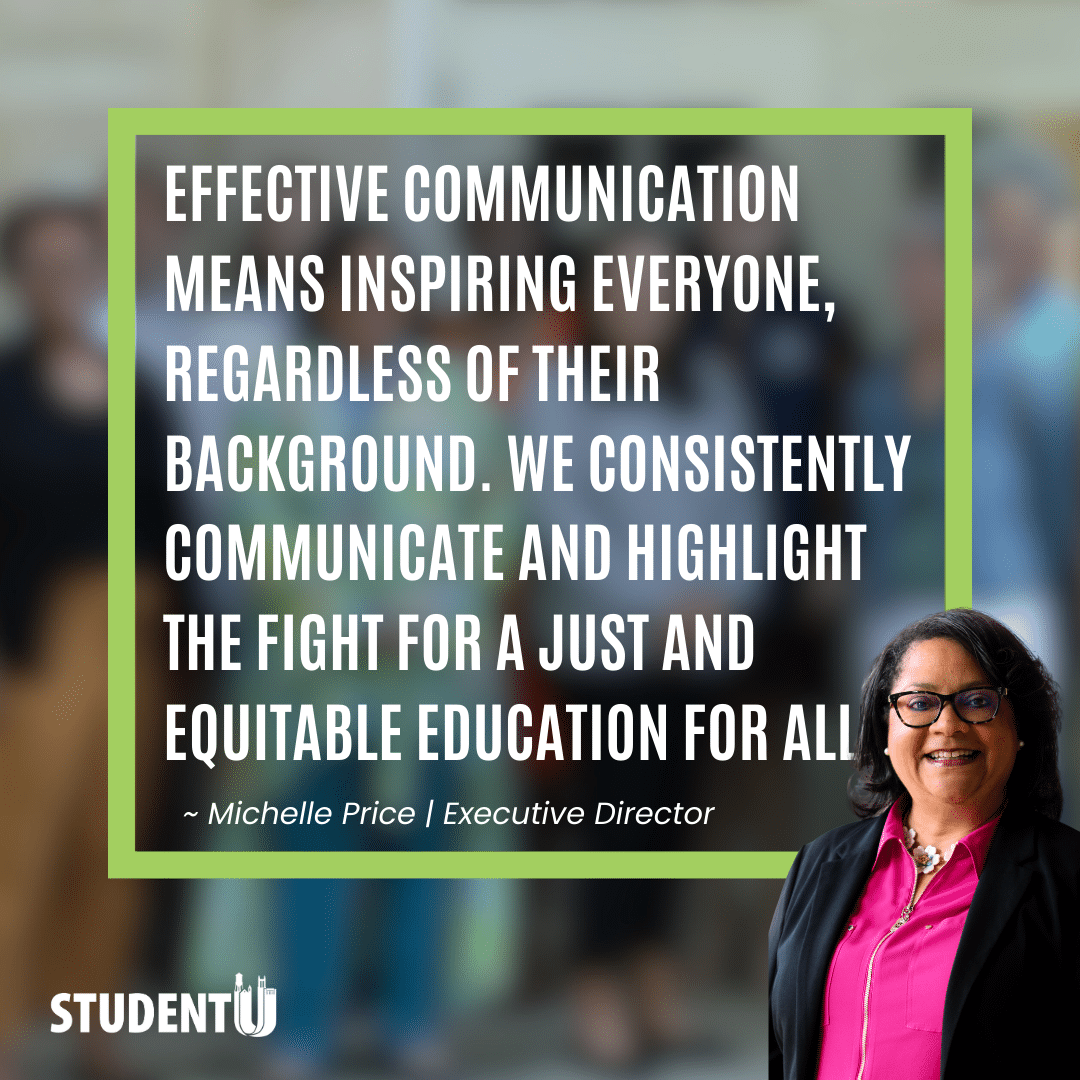
Youth Work 101: The Restorative Practices Framework
By: April Warren and Connor Kirkpatrick
Welcome to the Youth Work 101 Series! Student U started this blog series to support youth work practitioners, educators, advocates for young people, and after-school professionals in their work by sharing what has worked for us and by offering free resources each month on a best practice. Click here to jump to our Restorative Practices Nametag Questions resource for those who work with youth for this month. This month’s blog on the Restorative Practices Framework is brought to you by April Warren, Student U’s Middle School Program Coordinator and lover of all things Fall related.
At Student U, we work with young people every day, and the reality of working with young, developing humans is that mistakes will happen: adolescents will inevitably harm each other with their words or actions, sometimes intentionally and sometimes not. Oftentimes I see middle schoolers going through life doing just about whatever their heart desires, not understanding how their actions impact others.
As youth workers, we have a responsibility to respond to mistakes and instances of harm in a firm and gracious way that creates learning opportunities. At Student U, we use Restorative Practices to mediate between students and repair harm in our community. Because Restorative Practices is one of the most important tools in our toolbelt at Student U, we are going to dive into what it is and why we use it.
Restorative Practices: What is It?
Restorative Practices is a framework for being that is grounded in the values of showing respect, taking responsibility, and strengthening relationships.
This framework includes the following four strategies:
- Proactive steps to build community
- Explicit systems and processes that address choices and actions that harm the community in a way that is fair and humane
- Separating the deed from the doer
- Holding individuals truly accountable for repairing relationships and strengthening community after harm has occurred
By comparison, most schools use a punitive system of punishment where administrators and figures of authority deliver consequences to youth in response to misbehavior, and the exchange is focused between the adult and the young person. Restorative Practices is not a curriculum, program, or checkbox, but rather a framework for being that contextualizes an individual’s actions with their larger community and breaks the transactional consequence system of traditional punishment methods.
Why Use the Restorative Practices Framework?
On a basic level, traditional punitive systems of behavior management are not designed to give students a chance to learn from mistakes. When a student receives a consequence from an adult such as a suspension in a school setting, we are just penalizing them for making a mistake. While the student may be less likely to engage in the same behavior again, it is because they are fearful of the consequence they will receive rather than because they understand the implications of their actions and how it affects their community.
Furthermore, this system of punishment has historically disproportionately criminalized students of color. This dynamic has created a school to prison pipeline where the students that get suspended the most often are funneled into our criminal justice systems. The Restorative Practices framework is a way to disrupt this power dynamic and intervene in a way that affirms the dignity of community members and gives students and teachers an opportunity to understand each other.
I want to add a caveat here! “Kids need consequences” is a refrain we often hear in educator circles to defend the traditional punitive system, and it’s important to state that we’re not saying kids don’t need consequences. Consequences, when used effectively, can be an important tool towards creating safe spaces. We are saying that a consequence needs to make sense based on whatever harm has happened. As an organization, we believe suspension is not an appropriate response to harm because it is ejecting a student from our community rather than providing an opportunity for the student to grow. We do believe, however, that sometimes students need to spend time away to reflect and do self-work before entering the community space positively again. So just to clarify, consequences are good when appropriate and responsive to what has happened. Okay, caveat over, back to more reasons why we use Restorative Practices!
When Restorative Practices are used effectively, students learn empathy and they really understand the implication of their actions. Restorative Practices allows students to see their peers and educators and larger community members as human beings like them, and they are empowered to view their own actions as impacting those around them. Additionally, Restorative Practices allows for the free expression of emotion for our students. Students have an opportunity to express what they were thinking and feeling and this is an important step in inviting them to grow from a mistake.
Personally, Restorative Practices allowed me to build stronger relationships with students. Before I implemented Restorative Practices, I was just *trying* to maintain order, and even when I first tried implementing the Restorative Practices framework, I was frustrated. Repairing harm circles, a strategy where students circle up to discuss what harm has happened, confused my students because it was foreign to them compared to the punitive system they typically experienced at school. After I spent more time learning and immersing myself into Restorative Practices through training, readings, and talking to my co-workers, I became better at adjusting my questions and my practice to the needs of my students.
I still remember my “Aha!” moment when Restorative Practices really clicked: two students had gotten into a verbal disagreement over something, and I used a repairing harm circle, but I changed the way I ask them questions. After I facilitated this circle, the students genuinely heard each other, saw each other as human beings, and understood the impact their actions had on one another. They were then able to sincerely apologize to one another and set some agreements to prevent it from happening again. As they walked out of my office, I saw them actually fist bump each other before returning to class. That moment, the curtain opened. I thought “This is what Restorative Practices looks like!” and was brought to really proud tears because of this breakthrough. Ever since, I haven’t looked back to simply maintaining order and have continued to improve the way I utilize Restorative Practices with our students.
Being able to sit down with a student and listen to them has really drastically changed the way that I experience hard conversations with students, and I believe in the power of Restorative Practices as a tool for facilitating genuine restoration rather than apologies that are forced.
How to Use the Restorative Practice Framework
Like my own journey, Restorative Practices is something that can be difficult to implement overnight, and you may already be practicing this framework without even knowing it!
You should start by reflecting on your own typical approach to managing your classroom. Check out the Social Discipline window below, developed by the International Institute of Restorative Practices. The vertical axis represents control and holding students to high expectations, while the horizontal axis represents fostering careful relationships that encourage students. Where do you typically fall in this chart? Are you more punitive (in the traditional consequence method mentioned above) or more permissive (not holding students accountable for their actions)? It is important to identify our typical leanings in order to see how we need to compensate in order to have a more restorative classroom. Evaluating your own current classroom strategy and what your school culture is like, and simply being aware of how you handle mistakes and misbehaviors is the first step.
Another easy way to start implementing Restorative Practices is by using affective statements. These are simply statements that express emotions, both pleasant and unpleasant, to students. For example, rather than saying “Stop talking,” you can say, “It makes me feel frustrated when you aren’t listening to me.” This helps students understand that their actions can also have an impact on you. (What?? Teachers have emotions too?? *middle schooler shock*) By clearly expressing your own pleasant and unpleasant feelings to students, you create a space where there is more freedom for them to do the same. When we use affective questions and statements, young people can start seeing peers and educators as human beings and consider the impact of their actions on those individuals.
Next, you should utilize affective questions to help students process together after a harm has occurred. These questions can be used informally in impromptu circles for small misbehaviors or more formally in repairing harm circles. Either way, these questions are the first thing we go through to identify the harm that has occurred, and you’ll notice that the first question is simple: What happened? We often think we know what happened because of what we heard and saw, but asking this question to students is a powerful way to get a full picture and to allow them to share their perspective and let them feel heard. The questions then proceed to delve into what the student was thinking and feeling, before asking them to think about how their community has been impacted and decide together on how to repair the harm.
It is important to name that all of these strategies and tools are most effective when utilized in a strong community that values relationships. Restorative Practices can be used proactively to build this type of community through community building circles. At Student U, we use community-building circles once a week where every student gets to share using affective statements to learn about one another. Through these circles, we create an environment where relationships feel important and it matters if a member of the community feels harmed.
When you implement changes, use some trial and error and give yourself grace. My first year of implementing Restorative Practices, I felt like the circles I facilitated were a big “Kumbayah it’s going to be okay” when it really felt like the system was so broken that students would be too resistant. Take heart! Implementing Restorative Practices is going to be hard because it’s so different from what we experienced and what our students experience every day. The more familiar they get and the more you practice, the easier it is and the more effective your Restorative Practice will be.
Resource:
To help you get the ball rolling on utilizing affective questions, this month we are providing a clear set of Restorative Practices questions that you can print, cut out, and put in your handy dandy lanyard and give to your educator buddies so that you all are Restorative Practices pros! We put these questions on the back of our lanyard so that we can refer to them in a flash. To download the questions in printable form, just insert your email below.
Restorative Practice QuestionsFurther Reading:
- The International Institute of Restorative Practices offers great resources and trainings on the Restorative Practices Framework.
- Ted Wachtel, Terry O’Connell, & Ben Wachtel have written excellent practical guides to implement Restorative Practices, all of which are now in their second editions: Restorative Circles in Schools, Restorative Justice Conferencing, and The Restorative Practices Handbook.
Finally, if you are nearby and are interested in delving in deep to the Restorative Practices Framework, Student U is offering a day and a half Restorative Practices training in partnership with Peaceful Schools NC on March 5th-6th. This training will provide real tangible strategies on how to lead restorative conversations and repairing harm circles, and plenty of time to practice, practice, practice. Click here to learn more.
That’s all for this post! We will see you next time in February when we invite High School Program Coordinator Michelle Norwood to cover Teaching Tolerance in honor of Black History Month. So long until then!
—
Donate to Student U and keep posts like this one coming.
Subscribe to this blog by entering your email to download the resource above.

